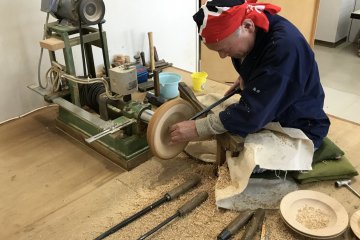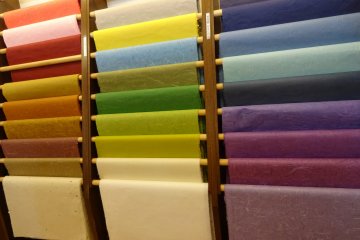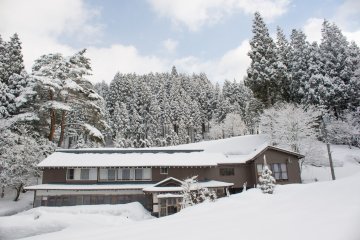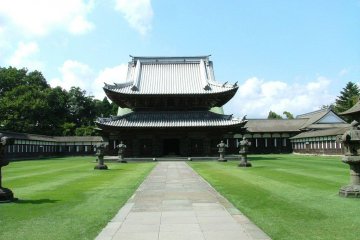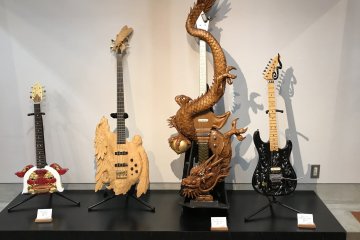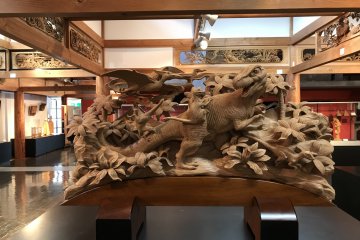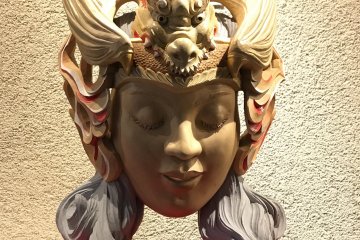Inami Town in Toyama Prefecture is well-known for their skilled wood carvers and sculptors.
There are 120 wood carving workshops spread out throughout the town with 300 wood carvers. It is said to take ten years at least before someone can reach the craftsmanship and skills required by the Inami Wood Carver’s Guilt. Wood carvers here handle as many as 200 different chisels. The main wood used is camphor, zelkova and paulownia.
Many of these workshops are lined up along Yokamachi Street in the center of Inami. Yokamachi Street, a stone-paved street, leads to Zuisenji Temple and nearby Hachimangu Shrine, just two of several local attractions.
Zuisenji Temple has been of great importance for the development of the wood carving industry in Inami. At the end of the 14th century, the then head monk of Kyoto’s famous Honganji Temple, Saint Shakunyo, set up Zuisenji Temple. The temple attracted worshippers from near and far and the area around began to flourish as temple town.
With the Head Monk from Kyoto came carpenters who built the temple and carved its rich decorations. The carpenters settled in the area, which marked the beginning of Inami as a wood carving center.
This temple’s main hall is the largest wooden temple structure in the Hokuriku region (Northern Honshu). Its Sanmon Gate is richly decorated with wood carvings made by Inami’s craftsmen.
Visitors to Inami can admire elaborate wood carvings at the Inami Wood Carving Composite Hall, a museum dedicated to Inami Wood Carving. There are 200 items on display. They include many items that relate to Buddhism and temples, but also modern pieces of art and items for daily usage.
You can admire many ranma masterpieces here. Ranma are the wooden panels placed above a lintel between two rooms in a traditional Japanese house or a temple. There are also many masks used for the lion dance.
Foreign visitors will love the selection of guitars elaborately decorated with wood carvings. Owning such a piece will cost you dearly though.
If you would like to try out a bit of wood carving, then make your way to the Soyukan at the Inami Road Station "Kibori no Sato". It is located nearby the Composite Hall. At the road station's showroom you can find many wooden souvenirs carved in Inami for purchase.
Both of these places, the Wood Carving Composite Hall and the Soyukan, are easily reachable on foot, namely in 10 minutes from Zuisenji Temple.
The Hall is open daily from 9am to 5pm, except for the 2nd and 4th Wednesday every month. Entrance costs yen 500.
Nowadays Inami is also an international center of wood carving. Several times since 1991 the town has hosted an International Wood Sculpture Camp.
Recently it took place in August 2015, and it will take place again in 2019. Over a period of two weeks sculptors from Inami and from around the world work together open-air to produce original work, and visitors to Inami can watch and talk to the sculptors. If you ever wanted to be a wood sculptor, then come and check it out!



